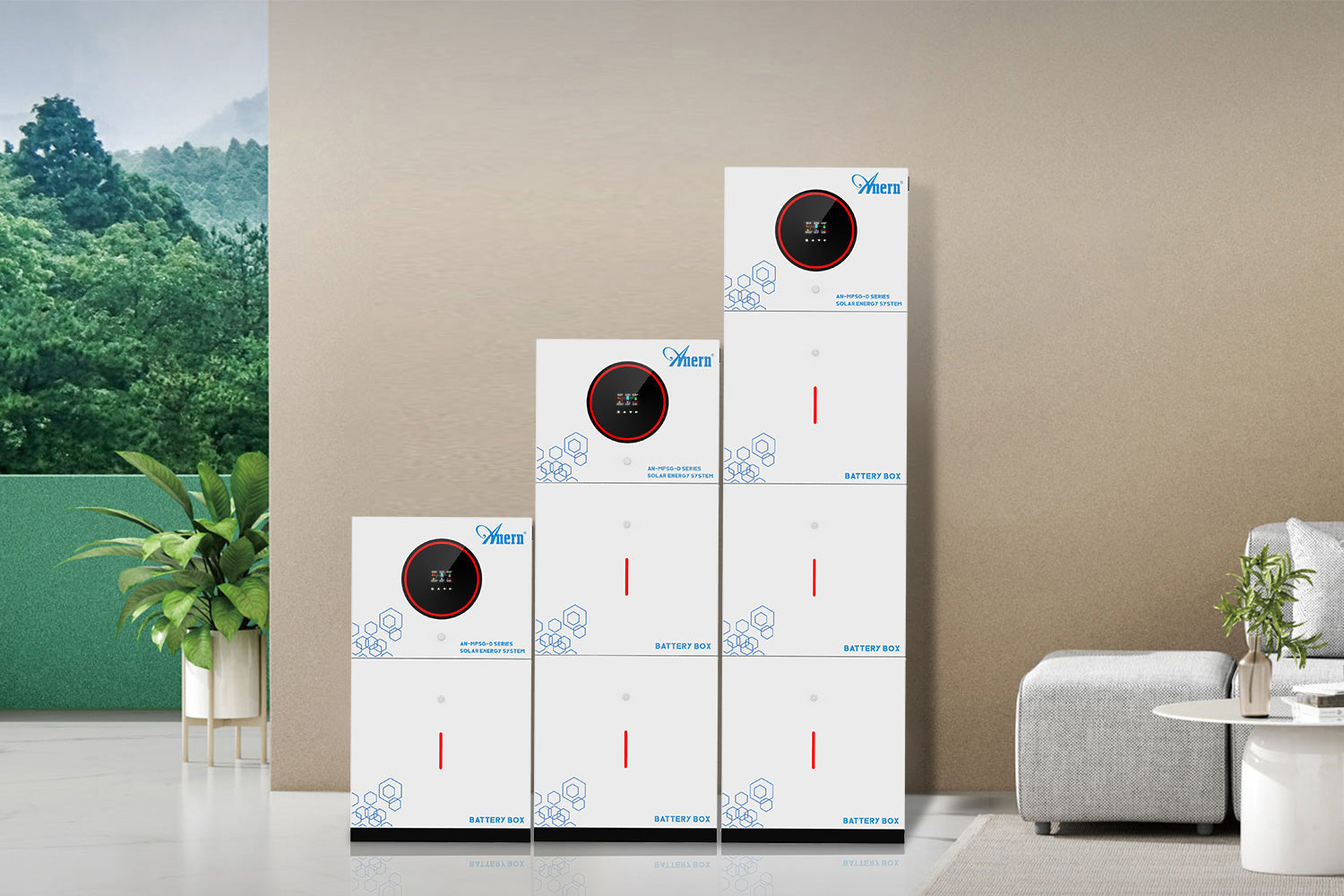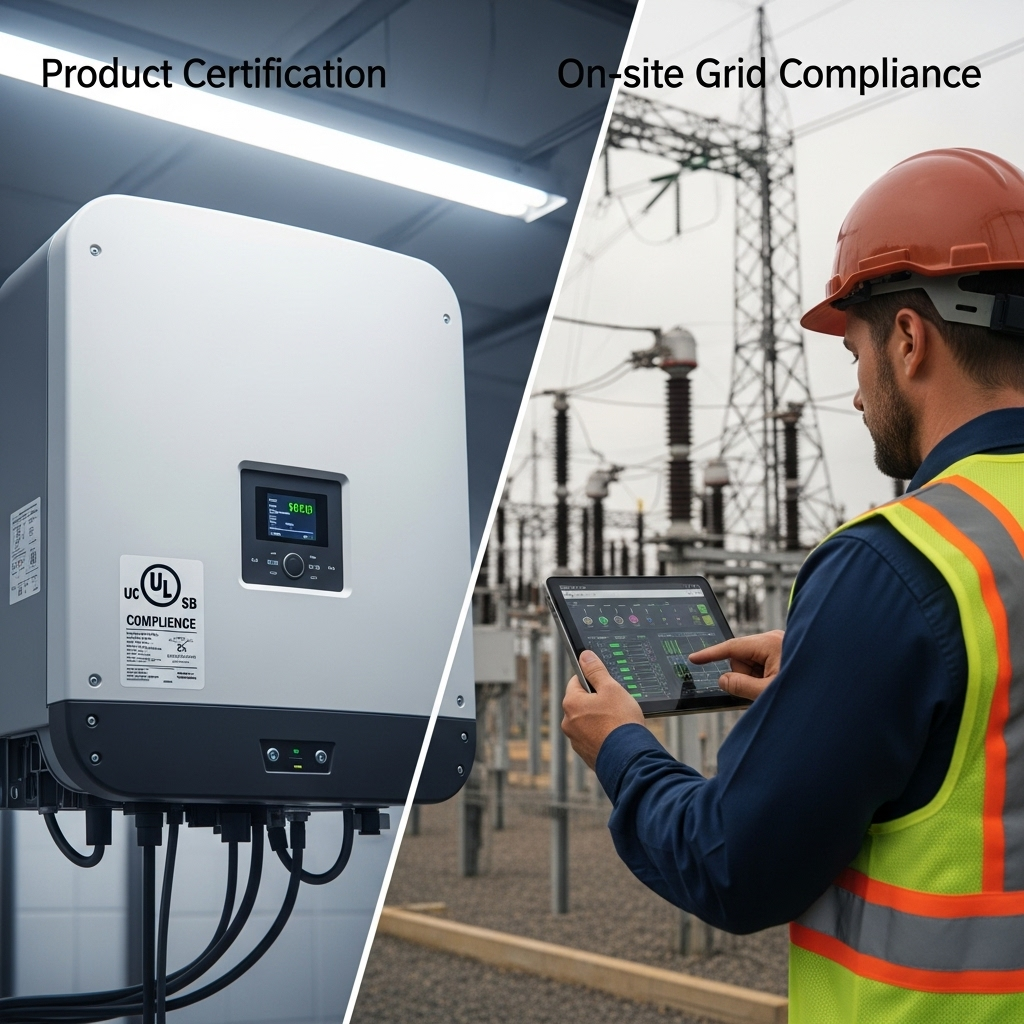In the world of solar energy and battery storage, standards are the language of safety, reliability, and grid integration. For manufacturers and system designers, navigating the alphabet soup of certifications can be a challenge. Three key standards often appear together: UL 1741 SB, IEEE 1547, and IEC 62109. While they are related, they serve distinct and complementary purposes. Understanding their individual roles is fundamental to developing compliant products and ensuring successful project deployment.
This breakdown clarifies the specific function of each standard, how they interact, and why this matters for the North American market and beyond. From foundational product safety to advanced grid support functions, each standard plays a critical part in building a resilient and efficient energy infrastructure.
IEC 62109: The Foundation of Inverter Safety
Before an inverter can interact with the grid, it must be fundamentally safe to operate. This is the domain of IEC 62109. It is an international standard that focuses on the safety and design requirements for power conversion equipment (PCE) used in photovoltaic systems.

Core Focus: Product Safety and Design
IEC 62109 is divided into two parts. Part 1 covers general safety requirements, while Part 2 provides specific requirements for inverters. The standard addresses potential hazards to protect both people and property. Its requirements cover:
- Protection against electric shock: Ensuring proper insulation, grounding, and clearance distances to prevent electrical hazards.
- Protection against fire hazards: Specifying requirements for materials, construction, and thermal management to minimize fire risk.
- Mechanical safety: Addressing the structural integrity of the enclosure and mounting to prevent physical injury.
- Environmental robustness: Testing the inverter's ability to withstand environmental factors like temperature extremes, humidity, and UV radiation.
Global Scope and Regional Adoption
As an international standard from the International Electrotechnical Commission (IEC), IEC 62109 serves as a baseline for safety certification in many parts of the world, including Europe, Australia, and Asia. It provides a globally recognized framework for inverter safety. National standards, such as UL 1741 in North America, often harmonize with or build upon the principles established in IEC 62109. Achieving this certification is a critical first step for any manufacturer aiming for a global market.
IEEE 1547: The Rulebook for Grid Interconnection
Once an inverter is proven safe, it needs to know how to behave as a good citizen on the electrical grid. IEEE 1547, developed by the Institute of Electrical and Electronics Engineers, provides the technical rules for this behavior. It is the North American standard for interconnecting Distributed Energy Resources (DER) with electric power systems.
Defining DER Performance on the Grid
Unlike IEC 62109, IEEE 1547 is not a product safety standard. It is a performance standard that dictates how a DER unit must respond to various grid conditions. The 2018 revision of the standard introduced significant new requirements for 'smart' inverters, enabling them to actively support grid stability. Key performance requirements include:
- Voltage and Frequency Ride-Through: The ability to remain connected and operate through minor grid voltage and frequency fluctuations, preventing mass trip-offs of solar systems during a disturbance.
- Reactive Power Support: The capability to inject or absorb reactive power to help regulate grid voltage, a crucial function for grid stability.
- Voltage and Frequency Regulation: Actively adjusting power output to help stabilize local grid voltage and frequency.
- Anti-Islanding Protection: A critical safety function that ensures the inverter de-energizes when the local grid is de-energized, protecting utility workers from back-fed power.
As detailed in the IRENA report, Grid Codes for Renewable Powered Systems, the requirements for grid users should remain consistent unless a facility undergoes significant modification. This makes designing to the correct version of IEEE 1547 vital for long-term project viability.
The Role of IEEE 1547.1
It is important to distinguish IEEE 1547 from IEEE 1547.1. While IEEE 1547 sets the performance *requirements*, IEEE 1547.1 is the corresponding *test procedure*. It provides the standardized, repeatable tests that laboratories must perform to verify that a device conforms to the rules set out in IEEE 1547. A manufacturer designs to 1547 and a lab tests using 1547.1.
UL 1741 SB: The Certification Bridge for North America
UL 1741 SB is the standard that brings safety and grid performance together into a single, certifiable package for the North American market. Developed by Underwriters Laboratories (now UL Solutions), UL 1741 is a long-standing safety standard for inverters and other DER equipment. The 'SB' supplement is the key component that integrates the modern grid support requirements.
Combining Safety and Grid Support
Think of UL 1741 SB as the master standard for US-bound inverters. It uses the foundational safety principles of UL 1741 (which are harmonized with IEC 62109) and incorporates the grid performance requirements of IEEE 1547. It then specifies that these performance functions must be tested using the procedures in IEEE 1547.1.
Therefore, an inverter with UL 1741 SB certification has been successfully tested and verified to meet both critical safety standards and advanced grid support functions. This is the certification that utilities and Authorities Having Jurisdiction (AHJs) in the United States look for to grant permission to operate.
What Certification to UL 1741 SB Signifies
Achieving a UL 1741 SB listing is a non-trivial process. It confirms that a product has undergone rigorous testing by a Nationally Recognized Testing Laboratory (NRTL). This certification is the definitive proof that an inverter is ready for safe and reliable interconnection with the North American grid. The international standardization process requires consensus among many stakeholders, which is why specific, regional certifications like UL 1741 SB are so critical for market access, a point highlighted in IRENA's analysis of grid code compliance management.
Key Differences at a Glance: A Comparative Table
This table summarizes the primary roles and scopes of the three standards.
| Standard | Primary Focus | Geographic Scope | Key Function | Is it a Test Procedure? |
|---|---|---|---|---|
| IEC 62109 | Safety Standard (Product Design) | International | Defines *safe construction* of inverters | No (Contains test requirements, but is not a standalone test procedure) |
| IEEE 1547 | Performance Standard (Grid Behavior) | North America | Defines *how* DER should interact with the grid | No (IEEE 1547.1 is the test procedure) |
| UL 1741 SB | Certification Standard (Safety + Grid Support) | Primarily North America | Verifies safety and grid performance together | No (It references IEEE 1547.1 for testing) |
How the Standards Work Together in Practice
These standards form a logical, layered approach to ensure a DER device is safe, effective, and reliable. The process for a manufacturer seeking to enter the North American market typically follows a clear path that leverages all three.
A Layered Approach to Compliance
An effective analogy is getting a driver's license. IEC 62109 is like the engineering standard for building a safe car with seatbelts and airbags. IEEE 1547 represents the traffic laws—speed limits, when to stop, how to merge. Finally, UL 1741 SB is the official driving test and license, proving the car is safe *and* the driver knows how to follow the rules of the road.
The workflow for a manufacturer is sequential:
- Design for Safety: The inverter is first engineered to meet the fundamental safety principles of IEC 62109.
- Implement Grid Functions: Firmware and hardware are designed to execute the advanced grid support functions defined in IEEE 1547.
- Test for Performance: The product is submitted to an accredited lab that uses the test procedures of IEEE 1547.1 to validate its grid response.
- Certify for the Market: The successful test results are used to obtain the final UL 1741 SB certification, bundling safety and performance verification into one mark.
Understanding these standards is key to evaluating overall system quality. For a deeper look into measuring real-world output, consult this ultimate reference on solar and storage performance metrics.
Navigating the Standards for Successful Deployment
While complex, the relationship between IEC 62109, IEEE 1547, and UL 1741 SB is logical. IEC 62109 establishes the international benchmark for safety. IEEE 1547 writes the rulebook for grid interaction in North America. UL 1741 SB acts as the comprehensive certification standard, confirming that a product meets both safety and grid performance requirements.
For anyone involved in deploying solar and energy storage systems in North America, specifying equipment certified to UL 1741 SB is the most direct path to ensuring compliance, speeding up interconnection approvals, and contributing to a more stable, renewable-powered grid.
Frequently Asked Questions
Is IEC 62109 certification sufficient for the US market?
No. While it is a foundational safety standard and its principles are harmonized with US requirements, it is not sufficient on its own. The US market requires compliance with UL 1741 SB, which specifically includes the grid interconnection performance requirements mandated by IEEE 1547.
Can an inverter be certified to IEEE 1547?
Not directly. IEEE 1547 is a technical performance standard, not a certification mark that a product can carry. Products are certified to UL 1741 SB, which serves as the official verification that the product meets the requirements of IEEE 1547 by undergoing the tests defined in IEEE 1547.1.
Why was the 'SB' supplement added to UL 1741?
The 'SB' supplement was created to align the UL 1741 standard with the updated, more advanced grid support functions specified in the 2018 revision of IEEE 1547. It addresses the modern grid's need for 'smart' inverters that can actively help maintain stability rather than just passively exporting power.
Do these standards apply to off-grid systems?
IEC 62109's safety principles apply to all inverters, including off-grid models. However, IEEE 1547 and UL 1741 SB are specifically for grid-interconnected systems. Off-grid systems are governed by different codes, such as specific articles within the National Electrical Code (NEC). A report on Quality infrastructure for smart mini-grids points out that interconnection standards can sometimes impose excessive requirements for smaller, isolated systems that do not interact with a large utility grid.





Leave a comment
All comments are moderated before being published.
This site is protected by hCaptcha and the hCaptcha Privacy Policy and Terms of Service apply.